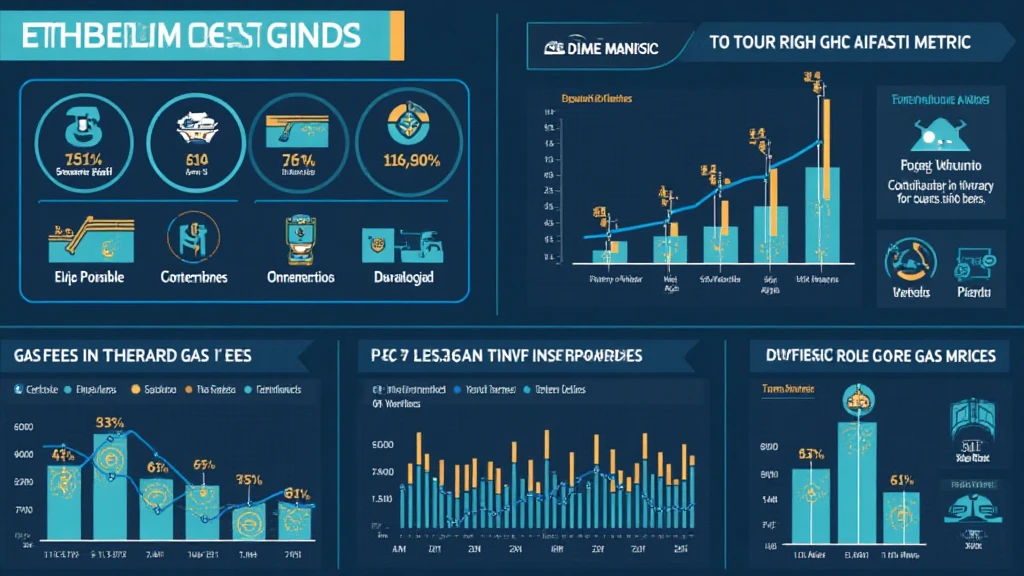Introduction
In the ever-evolving world of cryptocurrencies, Ethereum remains a leader, primarily due to its smart contract capabilities. However, with the platform’s growth, transaction fees—known as gas fees—have surged, causing users to seek efficient solutions. In 2024 alone, the total amount lost to DeFi hacks was a staggering $4.1 billion, highlighting the need for better and more optimized interaction with the Ethereum network.
This article aims to explore Ethereum gas optimization tools that can help both new and seasoned users save on transaction costs while ensuring their transactions are secure and efficient. So, let’s dive in!
Understanding Ethereum Gas Fees
Gas fees are the costs associated with executing transactions or smart contracts on the Ethereum network. The price you pay for gas is determined by supply and demand dynamics on the network. As more users transact, the gas price tends to rise. This is akin to how a bank vault secures its most valuable assets but can become congested during peak hours. The challenge is finding ways to manage these fees effectively.

Factors Affecting Gas Prices
- Network Congestion: High transaction volumes spike gas prices.
- Gas Limit: The maximum amount of gas units a user is willing to pay for a transaction.
- Gas Price: Amount of ETH the user is willing to pay per unit of gas.
Popular Gas Optimization Tools
To help you navigate these challenges, various Ethereum gas optimization tools have emerged. These tools not only help reduce transaction fees but also enhance the efficiency of executing operations on the blockchain.
1. Gas Station Network (GSN)
The Gas Station Network is a decentralized set of relayers that allow users to interact with Ethereum without paying upfront gas fees in ETH. They convert a variety of tokens to cover transaction costs, which is particularly useful for dApps in attracting a user base that might otherwise be deterred by gas prices.
2. Eth Gas Station
Eth Gas Station provides real-time data on gas prices, enabling users to choose optimal times for transactions. By analyzing the data, users can understand trends in gas prices and determine when to send their transactions to minimize costs.
3. EIP-1559
Introduced in the London Hard Fork, EIP-1559 redesigned the Ethereum gas fee structure by introducing a base fee that changes based on network demand. This development has made gas fees more predictable and manageable for users.
4. Layer 2 Solutions
Layer 2 solutions, such as Polygon and Optimism, operate on top of the Ethereum blockchain, significantly reducing gas fees. These platforms process transactions more efficiently by batching multiple transactions together, thereby lowering costs for users.
Real-Life Application: Gas Optimization in Vietnam
The Vietnamese crypto market has seen exponential growth, with a reported 40% increase in user adoption rates in 2023. As more users enter the market, understanding gas optimization tools becomes vital.
For instance, local blockchain-based projects can integrate Layer 2 solutions to offer users lower transaction costs. Additionally, promoting the use of gas price forecasting tools can help users make informed decisions while transacting.
How to Audit Smart Contracts for Gas Efficiency
As the Ethereum ecosystem grows, the importance of auditing smart contracts increases. An audit ensures that contracts are efficient and secure.
Steps for Auditing
- Code Review: Inspect the contract code for gas-intensive functions.
- Test Transactions: Simulate transactions on a testnet to gauge gas efficiency.
- Utilize Optimization Tools: Tools like Slither and MythX can help identify potential inefficiencies.
Conclusion
In conclusion, navigating the complexities of Ethereum gas fees doesn’t have to be overwhelming. By leveraging Ethereum gas optimization tools like GSN, Eth Gas Station, EIP-1559, and Layer 2 solutions, users can drastically reduce their transaction costs and enhance their overall experience.
With the continuing growth of the cryptocurrency market, particularly in regions like Vietnam, understanding and utilizing these tools becomes essential for any participant in the Ethereum ecosystem. As we move toward a future filled with blockchain innovations, proper gas management will be key to unlocking the full potential of smart contracts.
For more insights on the latest trends and tools in the crypto world, visit cryptopaynetcoin.


